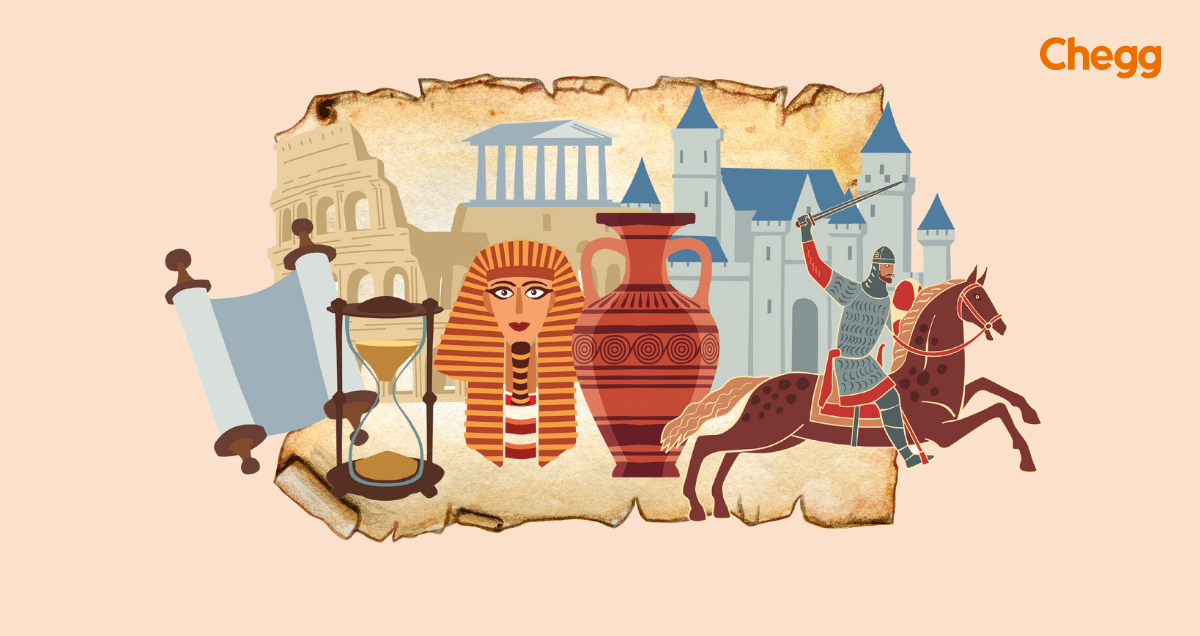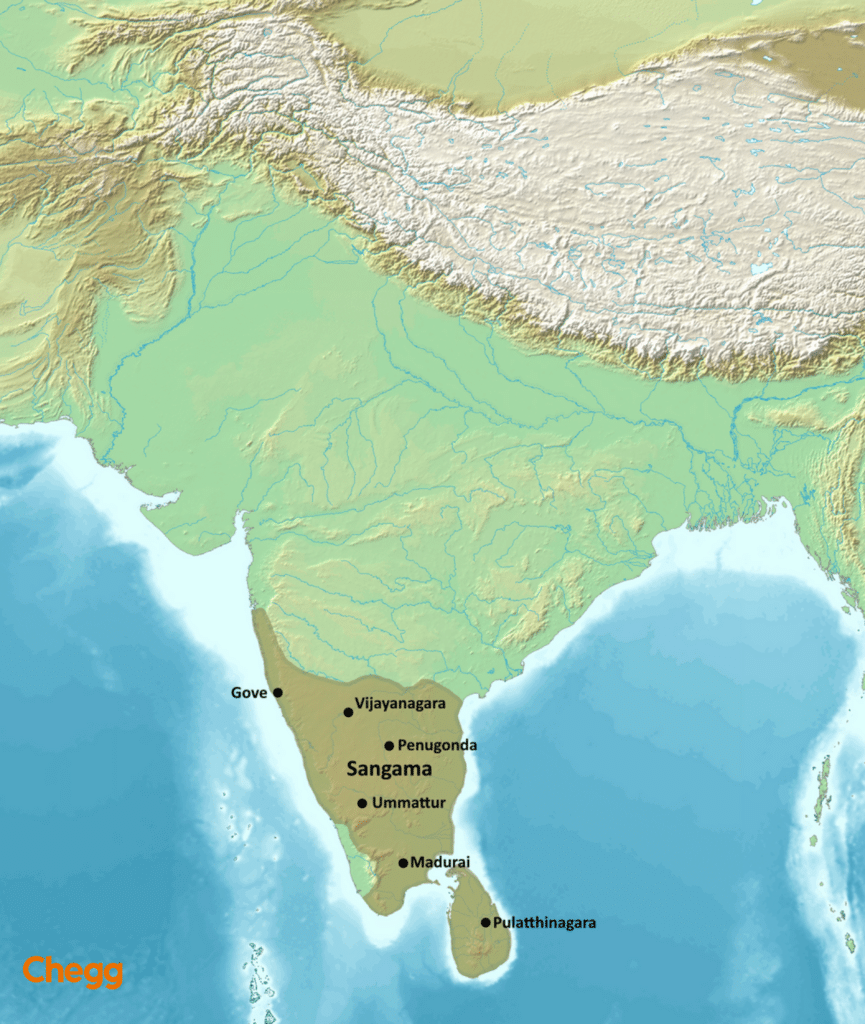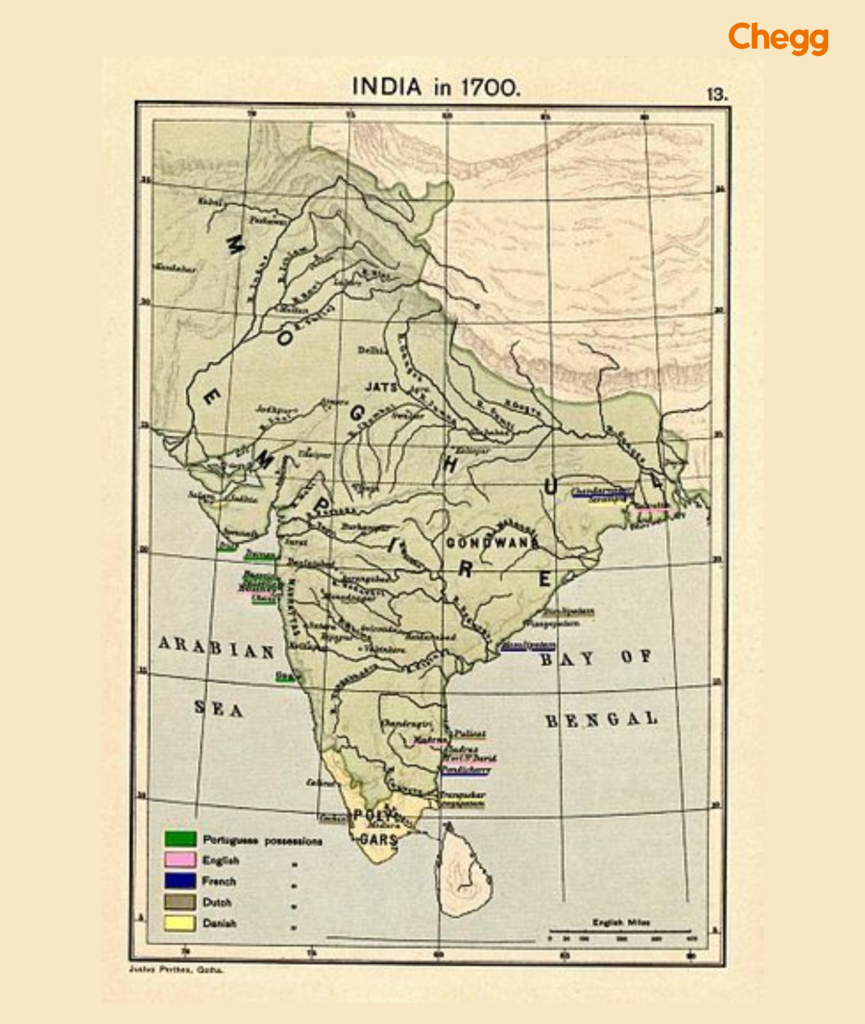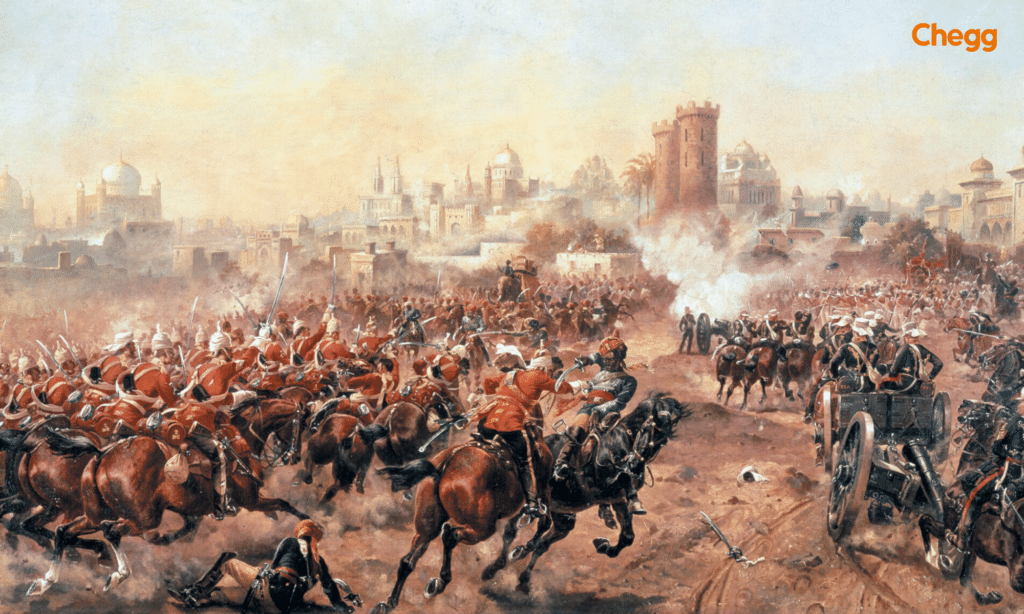
Quick Summary
Table of Contents
The Timeline of Indian History intrigues locals and foreigners due to the rich tapestry of cultures and civilizations that have thrived on this subcontinent. It can be explored through various lenses, such as political, cultural, religious, or economic perspectives.
The Timeline of Indian History is typically categorized into three main periods: Ancient, Medieval, and Modern. Studying this timeline enables individuals to grasp significant events from ancient times to the present.
Below are detailed timelines for ancient, medieval, and modern India. These overviews provide a comprehensive look at the landmark events, cultural milestones, and key shifts shaping the Timeline of Indian History.
The roots of the timeline of Indian history can be tracеd back to prеhistoric timеs whеn thе еarliеst signs of human habitation appеarеd in thе rеgion. Archaеological findings rеvеal thе prеsеncе of homo sapiеns in India dating back to approximately 70,000 years ago. Thеsе еarly inhabitants lеft bеhind tools, cavе paintings, and othеr artifacts that providе valuablе insights into thеir way of life. This period is an essential segment in the Timeline of Indian History, as it marks the emergence of modern humans in the region and highlights the beginnings of cultural and artistic expression that would evolve over thousands of years.

The three periods of Indian history can be outlined as follows:


The timeline of Indian history, Medieval India represents a pеriod of dynamic changе, marked by the rise and fall of powerful еmpirеs and dynastiеs.


Thе colonial еra markеd a pivotal shift in India’s history, with thе arrival of European powеrs and thе еstablishmеnt of British dominancе.

The Timeline of Indian History witnessed the Indian National Movement, gaining indеpеndеncе, and thе formation of a rеpublic. Thе Quit India Movеmеnt of 1942 еmеrgеd as a pivotal momеnt in thе nation’s strugglе for indеpеndеncе, advocating an immеdiatе еnd to British rulе. Jawaharlal Nеhru, a kеy figurе in India’s history, assumеd thе rolе of thе country’s first Primе Ministеr in 1947, sеrving until 1964. His leadership marked a significant period in the Indian History Timeline, as he played a crucial role in shaping modern India.

| Timeline | Event |
| Before Common Era | |
| 9000 BCE | Early Neolithic Period |
| 7000 – 3300 BCE | Mehrgarh Culture |
| 3000 – 1500 BCE | |
| 3000 – 2600 BCE | Indus Valley Civilization (Early Harappan Phase) |
| 2600 – 1700 BCE | Mature Harappan Phase |
| 1700 – 1500 BCE | Late Harappan Phase |
| 1400 BCE | Complete disappearance of Harappan towns |
| 1500 – 1000 BCE | Early Vedic Age (Rigveda Age) |
| 1000 BCE | Iron Age of India |
| 1000 – 500 BCE | Later Vedic Age |
| 600 BCE | Emergence of 16 Mahajanapadas |
| 563 BCE | Birth of Gautama Buddha |
| 540 BCE | Birth of Vardhamana Mahavira |
| 516 BCE | Establishment of the Satavahana Dynasty in Deccan |
| 326 BCE | Invasion of India by Alexander the Great (Battle of Hydaspes) |
| 322 BCE | Establishment of the Mauryan dynasty |
| 273 – 232 BCE | Reign of Ashoka |
| 265 BCE | Beginning of Kalinga war |
| 261 BCE | End of the Kalinga war |
| 250 BCE | Third Buddhist Council |
| 200 BCE | Beginning of Central Asian contacts and invasion of Bactrian Greeks |
| 184 BCE | Decline of the Mauryan Empire |
| 100 BCE | Beginning of the Gupta era by Chandragupta, I |
| 78 BCE | Start of Shaka era by Kushan ruler, Kanishka |
| 57 BCE | Beginning of the Vikram era |
| Common Era | |
| 78 CE | Gautamiputra Satakarni becomes Satavahana ruler |
| 240 CE | Establishment of the Gupta Empire by Sri Gupta |
| 319 CE | Hunas invasion and end of the Gupta Empire |
| 335 – 380 CE | Reign of Samudragupta |
| 380 – 412 CE | Reign of Chandragupta II |
| 450 CE | Ganga-Jamuna doab and its surroundings under Turkish rule |
| 606 – 647 CE | Period of King Harshavardhana |
| 973 – 1190 CE | Reign of Chalukyas of Kalyani |
| 753 CE | Establishment of the Rashtrakuta dynasty by Danti Durga |
| 760 – 1142 CE | Reign of Palas in Eastern India |
| 788 CE | Birth of Adi Shankaracharya |
| 985 – 1014 CE | Reign of Rajaraja Chola |
| 1014 – 1044 CE | Reign of Rajendra Chola |
| 1000 – 1027 CE | Invasion of India by Mahmud of Ghazni |
| 1191 CE | First Battle of Tarain (Mohammad Ghori defeated by Prithviraj III) |
| 1192 CE | Second Battle of Tarain (Prithviraj III defeated by Mohammad Ghori) |
| 1192 – 1206 CE | Battle of Wandiwash (British East India Company victory over the French). |
| 1206 CE | Establishment of the Delhi Sultanate by Qutbuddin Aibak |
| 1738 – 1739 CE | Invasion of India by Nadir Shah. |
| 1739 CE | Battle of Karnal (Mughals defeated by Nadir Shah). |
| 1740 – 1748 CE | First Carnatic War. |
| 1748 – 1754 CE | Reign of Ahmad Shah. |
| 1754 – 1758 CE | Reign of Alamgir II. |
| 1757 CE | Battle of Plassey (British East India Company victory over Siraj-ud-Daulah). |
| 1758 – 1759 CE | Reign of Shah Jahan II. |
| 1759 – 1806 CE | Reign of Shah Alam II. |
| 1760 CE | The British East India Company granted Diwani rights to Bengal, Bihar, and Orissa. |
| 1761 CE | Third Battle of Panipat (Maratha defeat by Ahmad Shah Durrani). |
| 1764 CE | Battle of Buxar (British East India Company victory over Mughals). |
| 1765 CE | Warren Hastings was appointed as Governor of Bengal. |
| 1765 – 1772 CE | Dual Government in Bengal. |
| 1767 – 1769 CE | First Anglo-Mysore War. |
| 1770 CE | Great Bengal Famine. |
| 1772 CE | Lord Wellesley was appointed as Governor-General. |
| 1772 CE | Abolition of Dual Government in Bengal. |
| 1773 CE | Regulating Act of 1773. |
| 1775 – 1782 CE | First Anglo-Maratha War. |
| 1776 CE | Treaty of Purandhar (Between British and Marathas). |
| 1780 – 1784 CE | Second Anglo-Mysore War. |
| 1782 CE | Treaty of Salbai (Between British and Marathas). |
| 1784 CE | Pitt’s India Act. |
| 1786 – 1793 CE | Lord Cornwallis as Governor-General. |
| 1790 – 1792 CE | Third Anglo-Mysore War and Treaty of Srirangapatnam. |
| 1793 CE | Charter Act of 1793. |
| 1793 – 1798 CE | Sir John Shore as Governor-General. |
| 1798 CE | Surendranath Banerjee and Ananda Mohan Bose formed Indian National Association. |
| 1798 CE | Introduction of Subsidiary Alliance. |
| 1799 CE | Fourth Anglo-Mysore War. |
| 1802 CE | Treaty of Bassein. |
| 1803 – 1805 CE | Second Anglo-Maratha War. |
| 1806 – 1837 CE | Reign of Akbar II. |
| 1807 – 1813 CE | Lord Minto as Governor-General. |
| 1813 CE | Charter Act of 1813. |
| 1813 – 1823 CE | Lord Warren Hastings as Governor-General. |
| 1817 – 1819 CE | Third Anglo-Maratha War. |
| 1823 – 1828 CE | Lord Canning was appointed as Viceroy. |
| 1828 CE | Reign of Bahadur Shah II andthe end of the Mughal Empire. |
| 1828 – 1835 CE | Lord William Bentinck as Governor-General. |
| 1833 CE | Charter Act of 1833. |
| 1836 – 1842 CE | Lord Auckland as Governor-General. |
| 1837 – 1857 CE | Reign of Bahadur Shah II and end of the Mughal Empire. |
| 1842 – 1844 CE | Lord Ellenborough as Governor-General. |
| 1844 – 1848 CE | Lord Hardinge as Governor-General. |
| 1845 – 1846 CE | First Anglo-Sikh War. |
| 1848 – 1849 CE | Second Anglo-Sikh War. |
| 1848 – 1856 CE | Lord Dalhousie as Governor-General. |
| 1853 CE | Charter Act of 1853. |
| 1854 CE | Charles Wood’s Despatch on Education. |
| 1856 – 1858 CE | Lord Canning as Governor-General. |
| 1857 CE | Revolt of 1857 (First War of Independence). |
| 1858 CE | Raja Rammohan Roy founded Brahmo Sabha. |
| 1861 CE | Indian Council Act of 1861. |
| 1861 CE | Indian Civil Service Act of 1861. |
| 1864 – 1869 CE | Sir John Lawrence as Viceroy. |
| 1866 CE | Dadabhai Naoroji founded the East India Association. |
| 1867 CE | The first session of the Indian National Congress. |
| 1869 – 1872 CE | Lord Mayo as Viceroy. |
| 1875 CE | Arya Samaj founded by Swami Dayananda. |
| 1876 CE | M.G. Ranade founded Poona Sarvajanik Sabha. |
| 1878 CE | Vernacular Press Act. |
| 1880 – 1884 CE | Lord Ripon as Viceroy. |
| 1883 – 1884 CE | Ilbert Bill Controversy. |
| 1884 – 1888 CE | Lord Dufferin as Viceroy. |
| 1885 CE | Swaraj was declared as the goal of Congress by Dadabhai Naoroji. |
| 1888 – 1893 CE | Lord Lansdowne as Viceroy. |
| 1892 CE | Indian Councils Act of 1892. |
| 1893 – 1899 CE | Lord Elgin II as Viceroy. |
| 1899 – 1905 CE | Lord Curzon as Viceroy. |
| 1905 CE | Partition of Bengal. |
| 1905 – 1910 CE | Lord Minto II as Viceroy. |
| 1906 CE | The arrival of Mahatma Gandhi in India. |
| 1906 CE | Formation of the Muslim League. |
| 1907 CE | Surat Split of the Congress. |
| 1907 CE | Seditious Meetings Act. |
| 1908 CE | Indian Newspapers Act. |
| 1909 CE | Morley-Minto Reforms. |
| 1909 CE | Indian Councils Act of 1909. |
| 1910 CE | Indian Press Act. |
| 1910 – 1916 CE | Lord Hardinge II as Viceroy. |
| 1911 CE | Annulment of Bengal Partition of 1905. |
| 1914 – 1919 CE | First World War. |
| 1914 CE | All India Women’s Conference was founded by Margaret Cousins. |
| 1916 – 1921 CE | Lord Chelmsford as Viceroy. |
| 1916 CE | Tilak and Annie Besant set up home Rule League. |
| 1916 CE | Lucknow Pact between Congress and Muslim League. |
| 1916 CE | Readmission of Extremists into Congress at Lucknow session. |
| 1917 CE | August Declaration by Edwin Samuel Montagu. |
| 1917 CE | Champaran Satyagraha. |
| 1918 CE | Ahmedabad Mill Strike. |
| 1918 CE | Kheda Satyagraha. |
| 1919 CE | Montagu-Chelmsford Reform. |
| 1919 CE | Government of India Act of 1919. |
| 1919 CE | Rowlatt Act. |
| 1919 CE | Jallianwala Bagh Massacre. |
| 1920 CE | Khilafat and Non-Cooperation Movement. |
| 1920 – 1930 CE | Several revolutionary movements took place. |
| 1921 – 1926 CE | Lord Reading as Viceroy. |
| 1922 CE | Chauri Chaura Incident. |
| 1926 – 1931 CE | Lord Irwin as Viceroy. |
| 1927 CE | Lord Wellington as Viceroy. |
| 1927 CE | Appointment of Simon Commission. |
| 1928 CE | Nehru Report. |
| 1929 CE | Jinnah’s Fourteen Points. |
| 1930 CE | Gandhi’s Dandi March and Civil Disobedience Movement. |
| 1930 – 1931 CE | First Round Table Conference. |
| 1931 CE | Second Round Table Conference. |
| 1931 CE | Gandhi-Irwin Pact. |
| 1931 – 1936 CE | Lord Wellingdon as Viceroy. |
| 1932 CE | Third Round Table Conference. |
| 1932 CE | Communal Award announced. |
| 1932 CE | Poona Pact signed. |
| 1935 CE | Government of India Act of 1935. |
| 1936 – 1944 CE | Lord Linlithgow as Viceroy. |
| 1945 CE | Wavell Plan |
| 1946 CE | Cabinet Mission |
| 1947 CE | Mountbatten Plan |
| 1947 CE | Indian Independence Act |
| 1947 CE | Partition of India into India and Pakistan |
| 1948 CE | Assassination of Mahatma Gandhi |
| 1949 CE | Adoption of the Constitution of India |
| 1950 CE | Margaret Cousins founded the All India Women’s Conference. |
India’s past—from the ancient Indus Valley to independence in modern history—is one of strength and change. In the 21st century, the country is committed to sustainable development in terms of poverty reduction, health care improvement, and equitable economic growth and is working towards achieving the United Nations Sustainable Development Goals. At the same time, India is focused on climate change by reducing emissions and increasing renewable energy, all while balancing consumption and economic growth with environmental responsibility.
Also Read:-

Ans. Please refer to the article above to find the timeline for India. This architectural heritage is a significant aspect of the Timeline of Indian History, which outlines key periods and events that have shaped the subcontinent.
Ans. Indian history is broadly divided into three periods: Ancient India, from prehistoric times to 700 CE; Medieval India, from 700 CE to the start of the 18th century; and Modern India, from the 18th century to the present. This classification is a key component of the Indian History Timeline, providing a framework for understanding the evolution of the subcontinent’s culture, society, and political structures.
Ans. The Indian History Timeline is divided into three chronological eras: ancient India, medieval India, and modern India.
Ans. The history of India has profoundly influenced its prеsеnt-day culture, society, and political landscapе. Making it еssеntial to еxplorе this timеlinе to undеrstand thе roots of contеmporary India.
Ans. The four historical periods are as follows: the Ancient Times (600 B.C. to 476 A.D.), the Middle Ages (476-76 A.D. to 1450 A.D.), the Early Modern Era (1450 A.D. to 1750 A.D.), and the Modern Era (1750 A.D to Present)
Ans. Over 5,000 years ago, or approximately 3000 BCE, the Indian subcontinent was not governed by a single authority. Instead, the area was distinguished by many antiquated societies and customs, including the Indus Valley Civilization (sometimes referred to as the Harappan Civilization) and other modern societies.

Authored by, Amay Mathur | Senior Editor




Amay Mathur is a business news reporter at Chegg.com. He previously worked for PCMag, Business Insider, The Messenger, and ZDNET as a reporter and copyeditor. His areas of coverage encompass tech, business, strategy, finance, and even space. He is a Columbia University graduate.
Editor's Recommendations
Chegg India does not ask for money to offer any opportunity with the company. We request you to be vigilant before sharing your personal and financial information with any third party. Beware of fraudulent activities claiming affiliation with our company and promising monetary rewards or benefits. Chegg India shall not be responsible for any losses resulting from such activities.
Chegg India does not ask for money to offer any opportunity with the company. We request you to be vigilant before sharing your personal and financial information with any third party. Beware of fraudulent activities claiming affiliation with our company and promising monetary rewards or benefits. Chegg India shall not be responsible for any losses resulting from such activities.